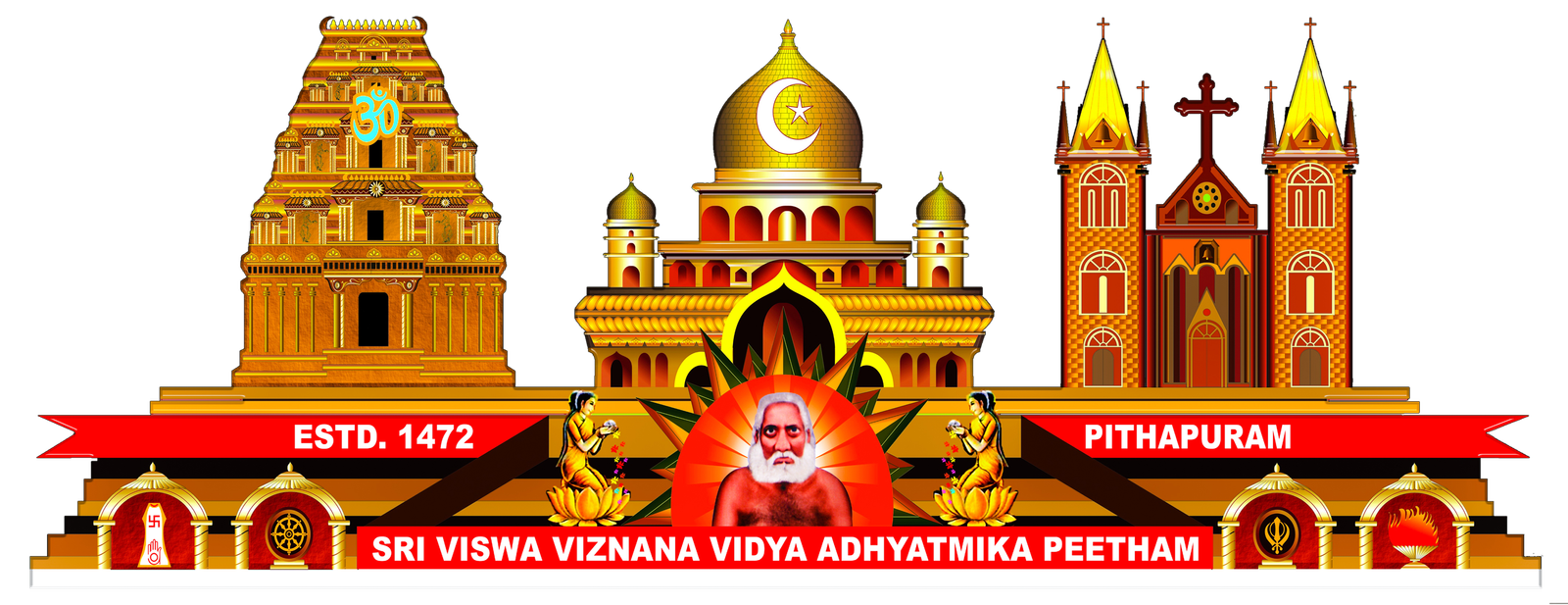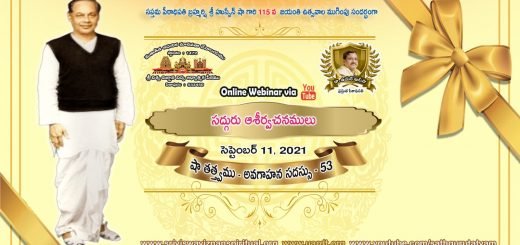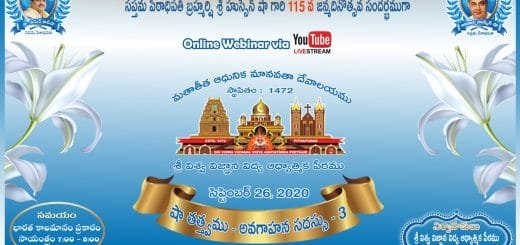Sha Philosophy – Chapter1: Man
When we express the word “MAN” we visualize certain form, which is superior to all the other moving and nonmoving life forms in this creation. It is beautiful. It has a wonderfully developed mind. It is treated as an intelligent being. If we question, “When is it created?” The philosopher said, “The first form, which is separated from that Virat, the primordial or corporeal form (the Miraculous Brilliant Divine Light) is Anu (atom). The shape of that Anu appears as Man. That Anu is transformed into the shape of universe and its semblance is creation”.
Indeed that Anu (atom) which is in the shape of “Man” has been originated as five elements. Then, in the dynamic process of creation it has been transformed into 8.4 million types of creatures. Then ultimately it has emerged as “Man”. This aspect of metamorphosis may not be ascertained in our inquiry. But, when a question, what is the ultimate change of form of this creation? arises certainly we have to say it is indeed the “Man”. This process of metamorphosis has similitude with that of a tree into a seed.
If we inquire with our intelligence, we can’t find any other birth (life form), which has such proportionality in its body structure. Every one knows that the principal deities for creation, existence and destruction are Brahma, Vishnu and Maheswara respectively. This Trinity (Thrimurthy) is the semblance of spiritual energy, which excels this creation. Even, the artist could not draw the pictures of these energy forms different from human shapes in painting. Therefore, in the manner of metamorphosis of creation, indeed human form alone can perceive the energy units (rudiments) known as sound, touch, appearance, taste and smell in the way of its sensory organs and express them separately in sound of “I” in its voice (such as “I” heard. “I” touched. “I” saw. “I” tasted and “I” smelled). The Prajapati (one of our first forefathers) named Swayambhu (the self born), was the first human form. He was the first Manu. (Ruler and saint of certain period of eons) However, Upanishads (the philosophical disquisitions attached to the Vedas) pronounce that, in the tenure of Vaivaswatamanu, he indeed was the first-born human form and the shape of the present man is the replica of that Vaivaswata Manu.
Upanishad says,
Vaivaswata manurnama,
mananeeyo maneeshinam.
It means, the Vaivaswata Manu’s form has appeared first in human form and which is in the shape of present man. Indeed, Lord Sri Krishna mentions this in Bhagavad-Gita as, Imam vivaswate yogam proktavanahamavyayam Vivasvan manave prah……… The spiritual power to comprehend theosophy is awakened into Vaivasvata Manu, who is in human form. Even now in the marriages and other auspicious occasions, the Vipras (priests) pronounce, Vaivaswata manvantare, (In the period Vaivaswata Manu) while taking Sankalpa (religious vow). From this it is deduced that, indeed from Vivaswata manu this well developed shape of man is produced.
Let us make an inquiry to know how far such great human form could use its well-developed mind advantageously in this age. In scientific pursuit it has discovered other planets, which are foreign to the planet earth. It is ready to make journey and reach other planets to grasp a variety of wonders contained in them. It is aspiring that; this endeavor will certainly become fruitful some day.
“Ye tathvishaye tathpurvam pracheenam” Let us question, how was humanity such as this during ancient time? The man of that period has explained about it in the form of Upanishad. However, we may not understand by what method the human race of that period was conscious about human knowledge. But we may conclude that, the way of living of ancient man is evolved from animal state, by passing through various phases from one state of mind to the other in the process of intellectual development on acquiring knowledge. This idea of knowing or inquisitiveness is innate in man’s life, which is the driving force for his development.
In this world, we are reflecting the knowledge acquired by this inquisitiveness as literature and considering it to be three types,
(1) History (2) Science and (3) Theosophy
(1) History: This is the subject of past events, which occur with respect to present time and are depicted in literature.
(2) Science: It proves the subtle energy, which is received in this world materially in accordance with history.
(3) Theosophy:
- It is the idea of perceiving that Veritable “Truth”, which is that almighty and imperceptible to human beings.
- It is the way of transforming that idea into that “truth”, which is beyond contrivance.
- This theosophy is in the form of Vedanta (the philosophical portion at the end of Vedas).
- This is very great cognizance and superior to that state of existence, which is known by science.
- Spirituality is the basis for this theosophy.
Science is appearing in the form of historical datum. The idea, which originates after the end of this science, is indeed Theosophy. The reason is; though the scientists of the present time accept this theosophy as a subject to be reckoned, when they are asked about that sublime energy originated from Eeswara (God), (Rasaswarupa the Miraculous Brilliant Divine Light) they are assuming silence with obeisance. They are accepting that they do not know even a little thing about it.
The man who has reached this stage is not a man! When the subject of conversation comes about the man, who has such a great knowledge of science; the Quran says, “If you catch and give a very small, common creature fly with removed wings into the hands of such a powerful man, will he be able to restore its wings and make it fly as usual?” If we inquire into this statement, we can conclude that the skill of a scientist is very much limited before that Divine energy.
Indeed the person, who endeavours to know that thing, which surpasses the intellectual development of the man, such as this scientist, is the man of distinction.
However, humanity is perishing by falling into the contrivance that has many quiescent ideas, which lead it to many inanimate births. This humanity is becoming useful to the deceivers, pushing the man to fall into the pit of darkness and leading him to destruction. The Man, who has manifested that Veritable thing, I.e. the man who is transformed into the Cosmic Form (universal shape), which is originated from Eeswara is not visible to the eye (inconceivable)
It is depicted about such a man and his nature in Bhagavad-Gita as,
Yuktahara viharasya yuktachestasya karmasu
yuktasvapnavabodhasya yogo bhavati duhkhaha
It means, the person, who is well versed in Yoga will indeed be like any other human being. In his absence, the criticism about him will be delightful and exemplary. Indeed, he is that Yogi, who has accomplished the Yoga, the transformation into Cosmic Form. In this world, such a person will live like any other common man and is accessible to all. Wherever he may dwell, there he is venerable. One can learn the moral sense of right or wrong by seeing his habits and behavior.
Trees, birds, domestic animals and beasts can also understand that person, who has been transformed into Yogi such as this (Cosmic Form). The Human being that comprehends that Yogi (that “soul”) will also be as powerful as that Yogi. Why because, on recognizing that Yogi, the human being who endeavors to comprehend that Yogi takes refuge in him. If that Yogi, who is realized by that human being as that Cosmic Form, transforms that human being also like him, that human being realizes for himself that, he too is in Cosmic Form. In addition to this, when that human being cognizes that Yogi, who has brought him to such Supreme Consciousness, is all pervading, then indeed he is fit to be called “man”. When the five elements, which are conjoined together with the creation, are put together and seen, certainly they appear in the shape of man to our eyes.
With regard to this, there is mention of a well-known incident in the Maha Bharata that occurred at the end of Mahabharata war. When a bird asked Udhishtira for the meat of a man, he showed the corpses, which were lying there and asked the bird, why do you cry for meat of man, when so many corpses were lying here. Then that bird made Udhishtira stand behind its extended wings and see those heaps of corpses. Then he perceived them as dead bodies of many animals instead of corpses of human beings.
When we say “man” he (she) is Cosmic Form. Since man has transformed into Cosmic Form, his (her) corpse disappeared from the carcasses of those animals. Therefore it is not in the form of a dead body. So, when the word “man” is expressed, we should say it is Cosmic Form.
He, who is fit to be considered “man”, has his soul in Cosmic Form, however, it is transforming into animal by falling into the darkness called ignorance by being controlled by the desires, which arise from illusion.
By understanding this aspect, without indulging in such affairs, when you endeavor and attain that Cosmic Form, when such Cosmic Form, which is in the human form happens to be your Guru (Master), and when your soul gives evidence that you too have been transformed into Cosmic Form, then you are a man.
Notes:
1. Philosopher: In this book the word philosopher is used at many places. Readers are requested to understand this philosopher as Dr.Umar Ali Sha, 6th Head of this Institution
2. Five elements: These are Earth, Water, Fire, Air and Space (Ether).
3. Manu: It is said in Upanishads and other scriptures that Manu is a ruler and saint of certain period of time (eons). The tenure of their rule is called Manvantaras. The present Manvantara is of Vaivasvata Manu. There are said to be fourteen of these Manus. VIZ., Swayambhu, Sarvochishu, Uttama, Raivata, Chakshusha, Vaivasvata, Suryasavarni, Dakshasavarni, Brahmasavarni, Dharmasavarni, Rudrasavarni, Rowchya and Owchya.
—-Bhagavatam
4. Udhishtira: He was the eldest Pandava Prince of Mahabharata. He was also known as Dharma Raja.


